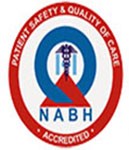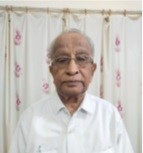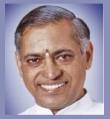
Procedure for cataract at our hospital
- Make sure to have an official diagnosis of your cataract and that you will need cataract surgery with an intraocular lens implant
- Discuss the type of intraocular implant that will best suit your needs. You can get monofocal or multifocal lens implants as well as toric lens implants that can correct astigmatism.
- Determine the surgical technology and whether you should have laser cataract surgery with a femtosecond laser
A cataract is extremely common. It happens to most people as they get older, starting to develop in their 40s and 50s with symptoms becoming noticeable by age 60 to 70.
Cataract is naturally occurring “clouding” or “yellowing” of the lens in the eye. For people who have cataracts, seeing through cloudy lenses is a bit like looking through a frosty or fogged-up window. Clouded vision caused by cataracts can make it more difficult to read, drive a car (especially at night) or see the expression on someone’s face.
Then, as the cataract grows larger and it clouds more of your lens, it will distort the light passing through the lens, which will lead to more noticeable symptoms.
Blindness due to cataracts presents an enormous problem in India not only in terms of human morbidity but also in terms of economic loss and social burden. The WHO/NPCB (National Programme for Control of Blindness, Ministry of Health & Visual Impairment, Government of India) survey has shown that 12 million blind people in India, and 80.1% of these are blind due to cataract.
Signs and symptoms of cataracts include:
- Clouded, blurred or dim vision
- Increasing difficulty with vision at night
- Sensitivity to light and glare
- Need for brighter light for reading and other activities
- Seeing “halos” around lights
- Frequent changes in eyeglass or contact lens prescription
- Fading or yellowing of colours
- Double vision in a single eye




Surgery is the only treatment for cataract. During cataract surgery, the eye surgeon removes the cloudy natural lens of the eye (cataract) and replaces it with an intraocular lens (IOL).
At Sankar Foundation Eye Hospital, we practice three main types of cataract surgical procedures
Three main types of cataract surgical procedures are in practice at Sankar Foundation:
- Phacoemulsification (Or “Phaco”) Cataract Surgery with Foldable Intraocular Lens (IOL) Implantation
- Manual Small Incision Cataract Surgery (MSICS).
- Conventional Extra Capsular Cataract Surgery (ECCE).
MSICS and ECCE are both safe and effective techniques for treatment of cataract patients in community eye care settings.
- State of the art technology for IOL power calculation, preoperative evaluation and in the operation theatre
- Dedicated team of optometrists for pre-operative evaluation
- Concept and technology-wise planning for sub-specialty cataract surgery














 Smt. K. Mani Mala is a postgraduate holding an MBA. She started her career as a founder faculty of one of the first management colleges in Visakhapatnam, viz. Indian Institute of Advanced Management. She worked with East India Petroleum Limited as its first employee and as Executive Assistant to the Managing Director. She was also associated in establishing the Joint Venture with M/s SHV Energy of Netherlands as General Manager (MIS). During her tenure she was also associated with other group companies such as 16 MW & 450 MW gas-based power projects in AP and 16 MW & 100 MW hydel power plants in Himachal Pradesh.
Smt. K. Mani Mala is a postgraduate holding an MBA. She started her career as a founder faculty of one of the first management colleges in Visakhapatnam, viz. Indian Institute of Advanced Management. She worked with East India Petroleum Limited as its first employee and as Executive Assistant to the Managing Director. She was also associated in establishing the Joint Venture with M/s SHV Energy of Netherlands as General Manager (MIS). During her tenure she was also associated with other group companies such as 16 MW & 450 MW gas-based power projects in AP and 16 MW & 100 MW hydel power plants in Himachal Pradesh.
 ( Late) Dr. Kumar studied Law and Economics at the Andhra University, Visakhapatnam and Chennai. He was a Chartered Accountant of repute with offices in Visakhapatnam, Hyderabad and Chennai.
( Late) Dr. Kumar studied Law and Economics at the Andhra University, Visakhapatnam and Chennai. He was a Chartered Accountant of repute with offices in Visakhapatnam, Hyderabad and Chennai.